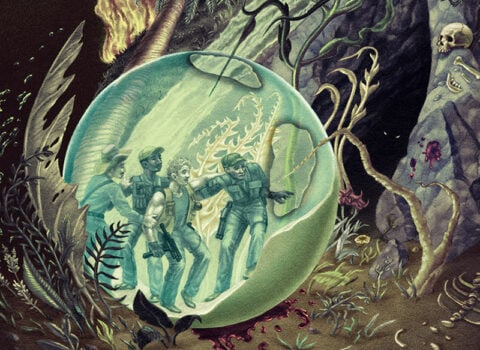“But can a novelist, or any writer for that matter, really notice too much or dwell too much on what he notices?” The question was posed a few weeks back by Sam Tanenhaus, on the New York Times Book Review‘s Papercuts blog. The question served as a pivot in Tanenhaus’s presentation of rival readings of a passage that appears in John Updike‘s novella “Of the Farm”:
Its panes were strewn with drops that as if by amoebic decision would abruptly merge and break and jerkily run downward, and the window screen, like a sampler half-stitched, or a crossword puzzle invisibly solved, was inlaid erratically with minute, translucent tesserae of rain.
First, Tanenhaus offered James Wood’s distrust of the passage, from his new book How Fiction Works (FSG): “Aestheticism is the great risk here, and also an exaggeration of the noticing eye.” A little later he presented Nicholson Baker’s appreciation of the same passage, from Baker’s Updikeophiliac U & I (1991):
I cried at the aforementioned description of the raindrops on the window screen like a crossword puzzle or a “sampler half-stitched”: it killed for the time being a patch of screen description of my own, but that didn’t matter, because Updike’s paragraph was so fine that my competitiveness went away; and when I found that Elizabeth Bishop’s 1948 New Yorker short story called “The Housekeeper” also had a screen whose clinging raindrops “fill[ed] the squares with cross-stitch effects that came and went,” this parallel only demonstrated to me how much more Updike could do with the same piece of reality: he had lifted it from the status of incidental setting and made its qualities part of the moral power and permanency of his mother’s house…. What I liked so much about “Of the Farm” was that Updike’s terror was under control; the proportion between consumed and unconsumed holes was just right; you could still see through the mesh of the screen, but the clinging metaphorical figures, such as the droplet-needlework image itself, were there in cross-eyed, painstaking abundance.
Tanenhaus’s question is useful, for it serves to remind readers of the precise function of criticism: answering fully such questions as “can a novelist, or any writer for that matter, really notice too much or dwell too much on what he notices?” As a form of argumentation, literary criticism is charged with making defensible cases for indefensible positions. “Defensible” in the sense that one must marshal proof, in the form of quotations from a work of literary art, that make a case for the integrity or incoherence of such a work. “Indefensible” in the sense that however much proof one marshals, one is only offering a fleeting thinking-through of a thing–not its destruction, much less its salvation.
































































































